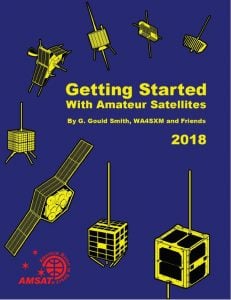Fox-1Cliff was successfully launched on Spaceflight’s SSO-A: SmallSat Express mission on a SpaceX Falcon 9 from Vandenberg Air Force Base at 18:34:05 UTC on December 3, 2018. Following deployment, the spacecraft was activated on schedule at 23:54:27 UTC.

At approximately 00:30 UTC on December 4th, several stations in Brazil, including PS8MT, PT9BM, and PT2AP, reported hearing the voice beacon “Fox-1Cliff Safe Mode,” confirming that the satellite was alive. Just before 00:40 UTC, AMSAT Fox-1 Team Member Burns Fisher, WB1FJ, was the first to submit telemetry to AMSAT servers. Initial telemetry values show the satellite to be in good health.
Thanks to the 29 different stations that contributed telemetry during Fox-1Cliff’s initial orbits. All stations are encouraged to please continue collecting telemetry during the commissioning process and are reminded not to transmit on the uplink frequencies until AMSAT opens the satellite for general use. The commissioning process is expected to take approximately 7-10 days.


AMSAT purchased a commercial launch for Fox-1Cliff, please consider a donation to “refill the coffers” for GOLF and other future AMSAT missions by making a donation today.
As part of the preparations for the launch of Fox-1Cliff, AMSAT is making the “Getting Started With Amateur Satellites” book available for a limited time as a download with any paid new or renewal membership purchased via the AMSAT Store. This offer is only available with purchases completed online, and for only a limited time. A perennial favorite, Getting Started is updated every year with the latest amateur satellite information, and is the premier primer of satellite operation. The 186 page book is presented in PDF format, in full color, and covers all aspects of making your first contacts on a ham radio satellite.

Please take advantage of this offer today by visiting the AMSAT store at https://www.amsat.org/shop/ and selecting any membership option. While there, check out AMSAT’s other items, including the M2 LEOpack antenna system, Arrow antennas, AMSAT shirts, and other swag. Be sure to view your cart before going to checkout. If you add a membership and then go directly to checkout, you’ll never see an option to add your free gift.

